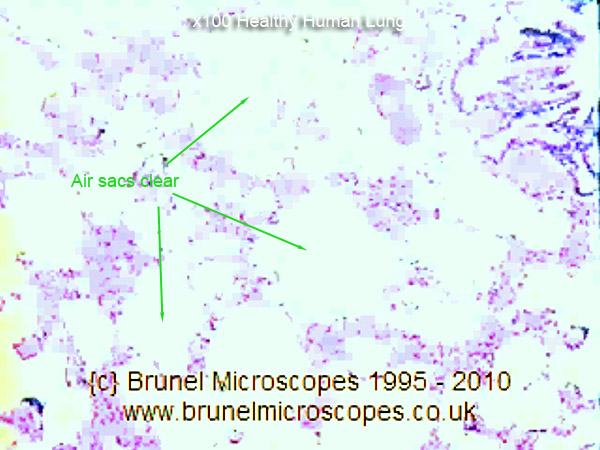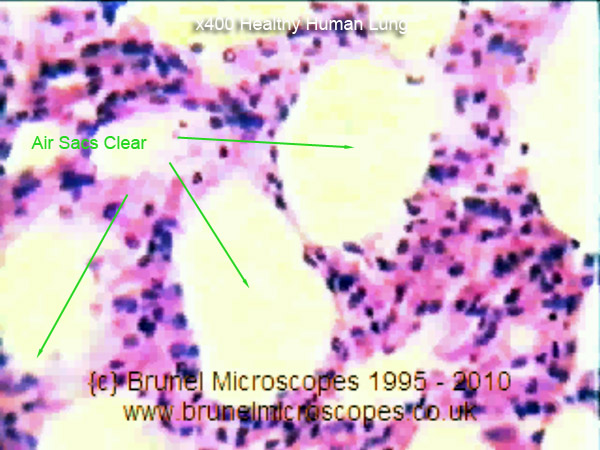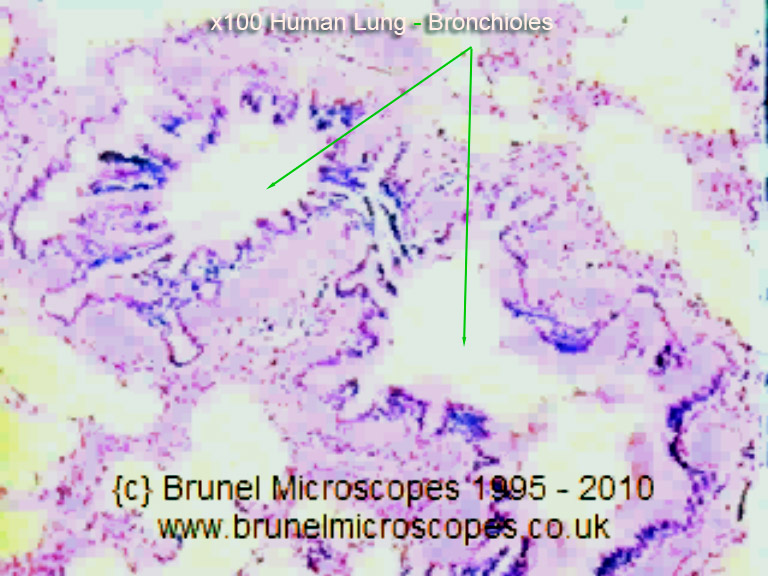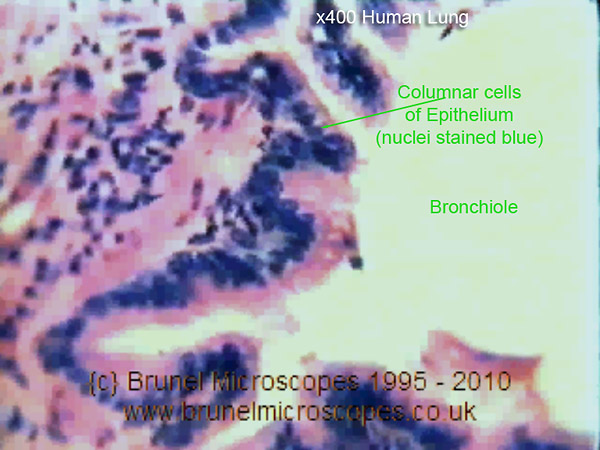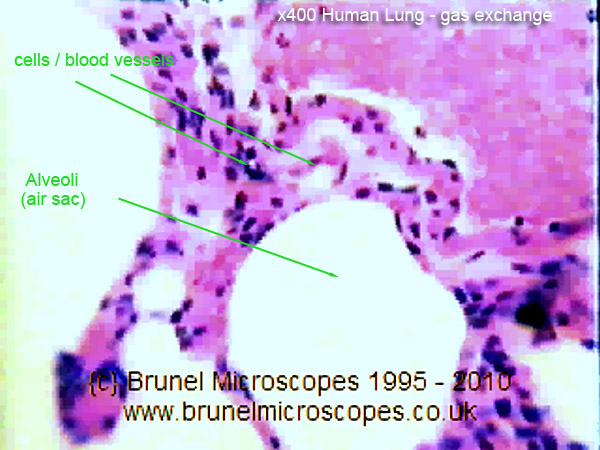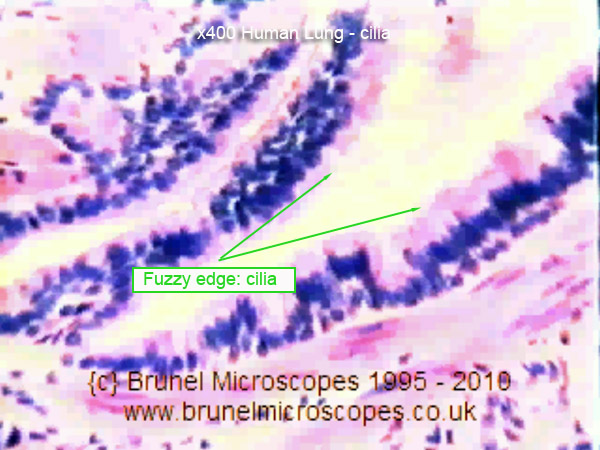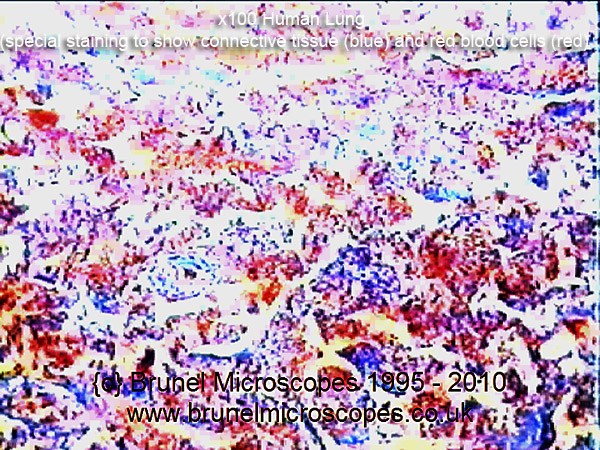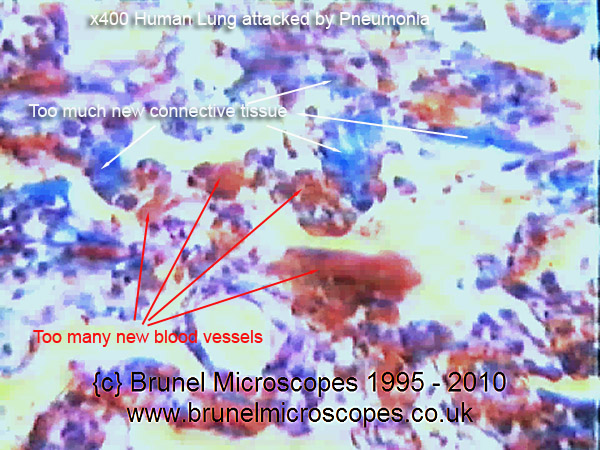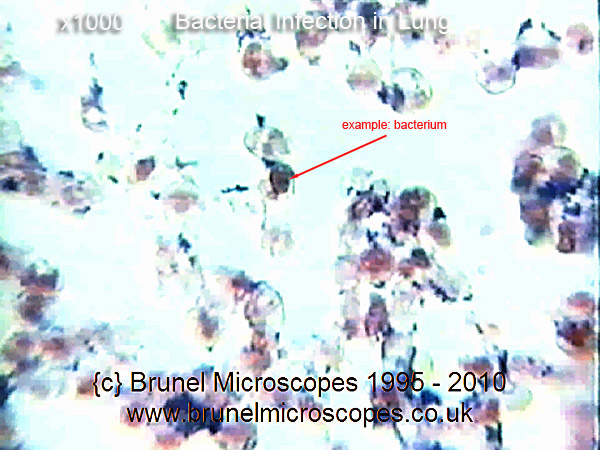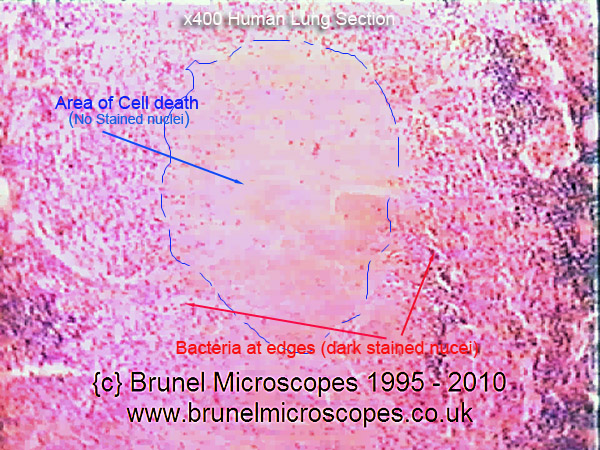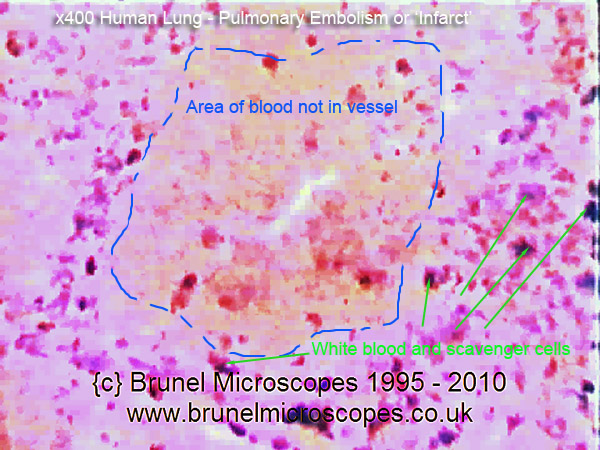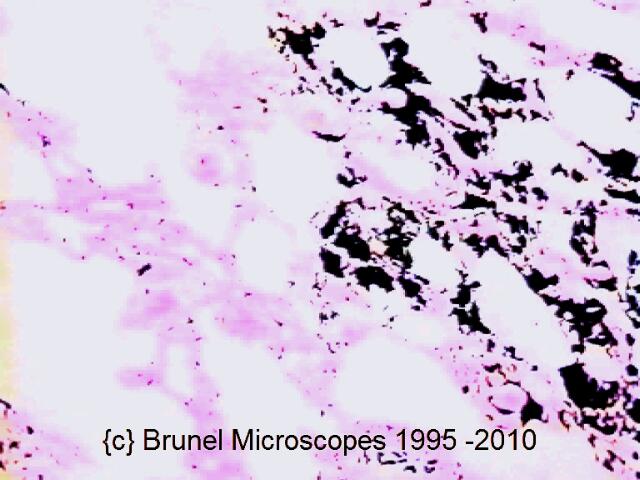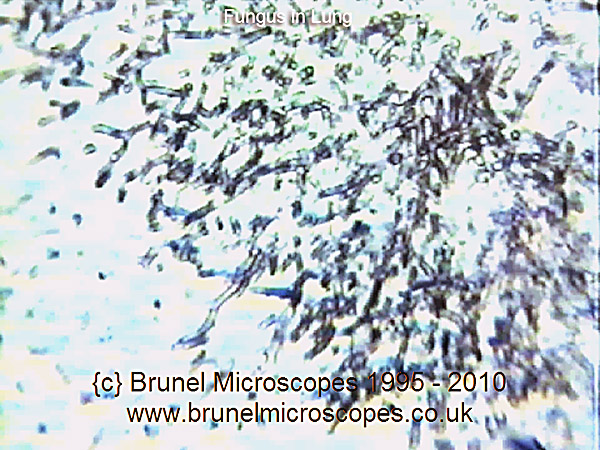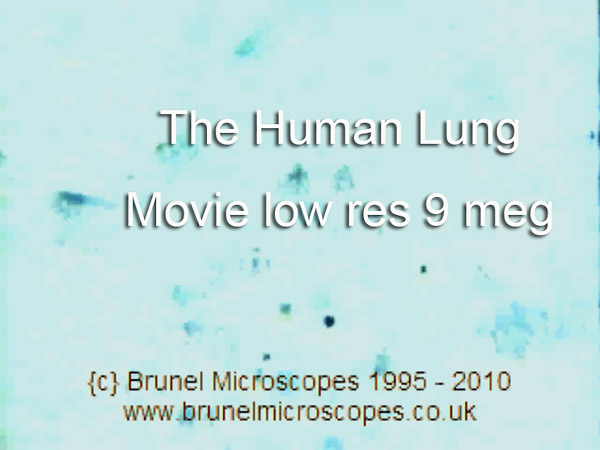|
An Overview of Human Cells for Light
Microscopists |
| Skin Lungs1 Lungs 2 Resources and external links | |
| To download high res avi files select from here: | Resources and copyrights |
| Lung Disease As with any subject studied under an optical microscope, what you see and determine correctly depends on several things. The first is understanding what staining technique was used in the specimen, as different techniques can reveal different structure and processes. The second, is often understanding what a specimen looks like when healthy and undamaged, and the third is knowing something about interpreting flat 2 dimensional patterns and detail into a 3 dimensional comprehension. Is this circular dot like that because of the way it was sliced? Is that curly thing with the thick blue perimeter really a blood vessel, etc? As we are now going to look at thin sections from the human lung, I think it is also a great opportunity to develop these skills a bit further. So I will include some advice concerning interpreting staining results and how to recognise structures in thin sections here. Don't think I am an expert at this, because I am not even a very good beginner: I simply listened to the Brunel Microscopes Video and I have used their knowledge for what follows (used with kind permission - see resources page). The follow images were taken as stills, exported from a VHS video tape (a copy of a copy) so please excuse the image quality. They are fit for purpose in this article though. To see a larger version of any example below, simply click on the existing small image.
Next month, I will continue this series by looking at other cells in the human anatomy with the aid of 3D virtual modelling. For credits, resources, and permissions, please go here. |
||||||||||||||||||||||||||||||||||||||||||||||||||||||||||||||||||||||||||||||||||
Comments to the author Mol
Smith are welcomed.
Microscopy
UK Front Page
Micscape Magazine
Article Library
all material © Mol Smith except where indicated
Published in May 2010 Micscape Magazine.
Please report any Web problems or offer general comments to the Micscape Editor.
Micscape is the on-line monthly magazine of the Microscopy UK web site at Microscopy-UK
© Onview.net Ltd, Microscopy-UK, and all contributors 1995 onwards. All rights reserved. Main site is at www.microscopy-uk.org.uk
